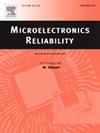Thermal management of automotive radar: Overcoming design challenges in constrained environments
IF 1.9
4区 工程技术
Q3 ENGINEERING, ELECTRICAL & ELECTRONIC
引用次数: 0
Abstract
Effective thermal management of automotive radar sensors operating under natural convection is essential for their optimal performance and reliability. This study introduces a comprehensive thermal design methodology for an automotive radar sensor using both experimental measurements and numerical simulations. Major heat-generating components in the radar sensor were firstly identified, and their temperatures were measured to determine the heat generation rates. Numerical simulations were then conducted to model the sensor's thermal behavior with and without its enclosure, focusing on natural convection as the primary cooling mechanism. Various thermal design strategies, including thermal bridges, were tested to improve the sensor's cooling. Experimental results demonstrated that the proposed methodology could increase the duty cycle of the radar sensor by approximately 6 % at room temperature and 8 % at high temperatures. This research highlights the effectiveness of the proposed thermal design methodology in addressing thermal management challenges, thereby improving the performance and reliability of automotive radar sensors in confined spaces.
汽车雷达的热管理:克服限制环境下的设计挑战
对在自然对流条件下工作的汽车雷达传感器进行有效的热管理,对其最佳性能和可靠性至关重要。本研究采用实验测量和数值模拟两种方法,介绍了汽车雷达传感器的综合热设计方法。首先对雷达传感器中的主要发热部件进行了识别,并对其温度进行了测量,以确定其发热率。然后进行了数值模拟,模拟了传感器在有外壳和没有外壳的情况下的热行为,重点关注自然对流作为主要冷却机制。测试了各种热设计策略,包括热桥,以改善传感器的冷却。实验结果表明,该方法可使雷达传感器的占空比在室温下提高约6%,在高温下提高约8%。这项研究强调了所提出的热设计方法在解决热管理挑战方面的有效性,从而提高了密闭空间中汽车雷达传感器的性能和可靠性。
本文章由计算机程序翻译,如有差异,请以英文原文为准。
求助全文
约1分钟内获得全文
求助全文
来源期刊

Microelectronics Reliability
工程技术-工程:电子与电气
CiteScore
3.30
自引率
12.50%
发文量
342
审稿时长
68 days
期刊介绍:
Microelectronics Reliability, is dedicated to disseminating the latest research results and related information on the reliability of microelectronic devices, circuits and systems, from materials, process and manufacturing, to design, testing and operation. The coverage of the journal includes the following topics: measurement, understanding and analysis; evaluation and prediction; modelling and simulation; methodologies and mitigation. Papers which combine reliability with other important areas of microelectronics engineering, such as design, fabrication, integration, testing, and field operation will also be welcome, and practical papers reporting case studies in the field and specific application domains are particularly encouraged.
Most accepted papers will be published as Research Papers, describing significant advances and completed work. Papers reviewing important developing topics of general interest may be accepted for publication as Review Papers. Urgent communications of a more preliminary nature and short reports on completed practical work of current interest may be considered for publication as Research Notes. All contributions are subject to peer review by leading experts in the field.
 求助内容:
求助内容: 应助结果提醒方式:
应助结果提醒方式:


